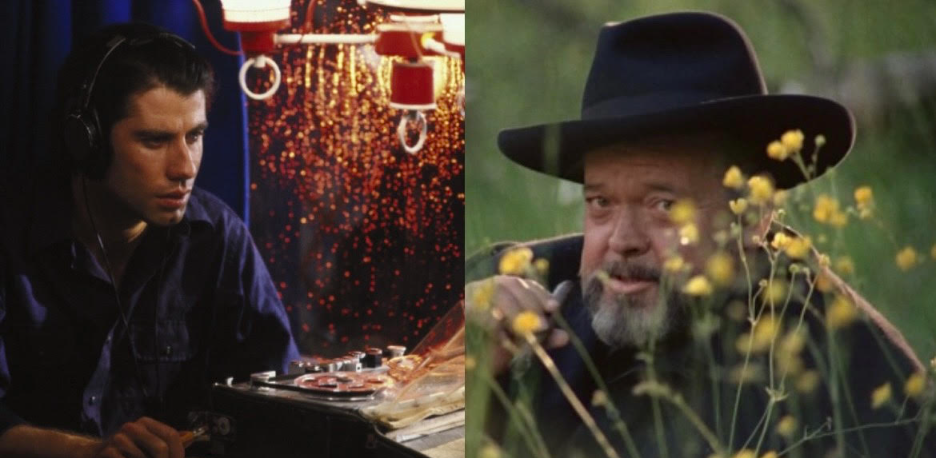Caption: (Left) John Travolta as Jack Terry in Brian De Palma’s 1981 thriller Blow Out, (Right) Orson Welles in his 1973 documentary F for Fake.
Written By: Patrick Novak, Staff Writer
PERCEPTION: The element of perspective and fakery in art are explored in F for Fake and Blow Out.
What makes a good movie? One that entertains without experimentation or one that grips your soul and challenges its very medium? Orson Welles’ 1963 documentary F for Fake and Brian De Palma’s 1981 thriller Blow Out are seemingly polar opposite films with divergent premises, yet they have one theme in common, the examination of the filmmaking process. F for Fake is an exploration of the authenticity of art and a deconstruction of the preconceived ideas society holds regarding what defines art. On the other hand, Blow Out focuses on a man uncovering a government conspiracy by making a short film exposing a crime.
Orson Welles’ 1973 documentary F for Fake documents the works of art forger Elmyr de Hory and his biographer Clifford Irving. Elmyr de Hory infamously fooled the art world with his identical imitations of paintings from famous artists such as Monet, Picasso and Modigliani. Clifford Irving, also an artist in writing Elmyr de Hory’s biography, later wrote a fake Howard Hughes autobiography that was passed off as real. Through his documentary, Orson Welles challenges his audience’s preconceived notions for what is considered art and the legitimacy of artistry. Welles himself even started his artistic career on the basis of fakery. His popularity began with a radio adaptation of the his novel, The War of the Worlds, which details a martian attack. Many listeners tuned into the station after the opening monologue, which provided background to the fictional story, with many people, who lacked prior context of the story, believing the broadcast was a nonfiction, live report of a martian attack. Subsequently, this caused a nationwide panic in the media. Such an accidental case of trickery propelled Welles to artistic stardom for which he continued to rise in popularity with his debut film Citizen Kane, which received outstanding acclaim and is still celebrated as one of the greatest films ever made. In his documentary and with the context of personal experience, Welles argues that to be an artist is to also be a fraud, with artistry being the ultimate form of lying. According to Welles, art informs reality in a way that conforms to the artist’s perception of it.
This idea of an artist’s work reflecting their perception of their world is explored further in Brian De Palma’s 1981 thriller Blow Out. Blow Out is about a man named Jack Terry, who accidentally captures a car crash when recording sound for a movie. Attempting to uncover the truth about the incident, Terry reveals that the crash was an assassination attempt on a presidential candidate: he pieces together his sound of the crash with photographs to develop a short film, which captures the entire incident. However, his photographs came from a newspaper claiming the crash was an accident, not an assassination, with Jack Terry’s use of the photographs alongside sound supporting a radically divergent claim, despite both using the same visuals.
Just as Elmyr de Hory’s counterfeit paintings provided something entirely different than the original painter’s, Terry’s scenario represents how the specific motives and world views of the people arranging the pictures or paintings of an artistic work, rather than the visuals themselves, shape how they are presented and ultimately the way we think about the same event. We do not see Elmyr de Hory’s imitation of Monet’s the same as we see the originals. We perceive these separate works with different ways of interpreting their importance in accordance with the way society condemns counterfeits and treasures original pieces. This suggests thereby that the way an audience views art and the artist’s intention of the work inform more about the art and its real impact than the actual substance of the piece.

